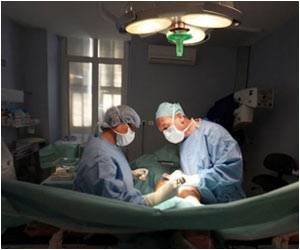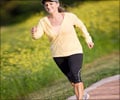A study published by JAMA Pediatrics, a JAMA Network publication reveals that most severely obese teenagers who underwent bariatric weight-loss surgery (WLS) experienced no major complications.

Thomas H. Inge, M.D., Ph.D., of the Cincinnati Children's Hospital Medical Center, and colleagues examined the clinical characteristics of severely obese adolescents undergoing WLS and safety outcomes (complications) after surgery. The study included 242 teens (average age 17 years) whose median body mass index was 50.5. Fifty-one percent of the teens had four or more major co-existing conditions, the most common of which were high cholesterol, sleep apnea, back and joint pain, high blood pressure and fatty liver disease, according to the study.
Laparoscopic Roux-en-Y gastric bypass was performed in 66 percent of the teens, vertical sleeve gastrectomy in 28 percent and adjustable gastric banding in 6 percent of patients. No deaths were reported during the initial hospitalization or within 30 days of operation. Major complications, such as reoperation, were seen in 19 patients (8 percent) and minor complications, such as readmission for dehydration, were observed in 36 patients (15 percent), the study found.
"These data demonstrated that 92 percent of the 242 severely obese adolescents who underwent WLS did so without major complications. This safety profile, including a 5 percent rate of major inpatient morbidity, was demonstrated despite the presence of significant comorbidities and severity of obesity that exceeded that of most published adult and adolescent bariatric studies," the authors note.
Researchers suggest more studies need to be conducted to assess long-term outcomes for adolescents undergoing WLS.
Editor's Note: Authors made conflict of interest disclosures. The Teen-LABS Consortium was funded by cooperative agreements with the National Institute of Diabetes and Digestive and Kidney Disease and through grants. Please see the articles for additional information, including other authors, author contributions and affiliations, financial disclosures, funding and support, etc.
Advertisement
In a related editorial, Michael G. Sarr, M.D., of the Mayor Clinic, Rochester, Minn., writes: "Inge and colleagues have shown that although minor and major complications do occur in the early postoperative period after weight-loss surgery, the mortality was nil and the morbidity was treatable and similar to that in adults."
Advertisement
"Adolescence is a crucial time for the development of the emotional as well as social foundation of later life; many of us maintain that the psychosocial retardation (or call it politically whatever you want – handicap, isolation, impairment – we all know what this means) probably needs to be considered on equal terms as are the more evident metabolic problems of severe obesity; they are all interrelated," Sarr concludes.(JAMA Pediatr. Published online November 4, 2013. doi:10.1001/jamapediatrics.2013.4496.
Source-Eurekalert










